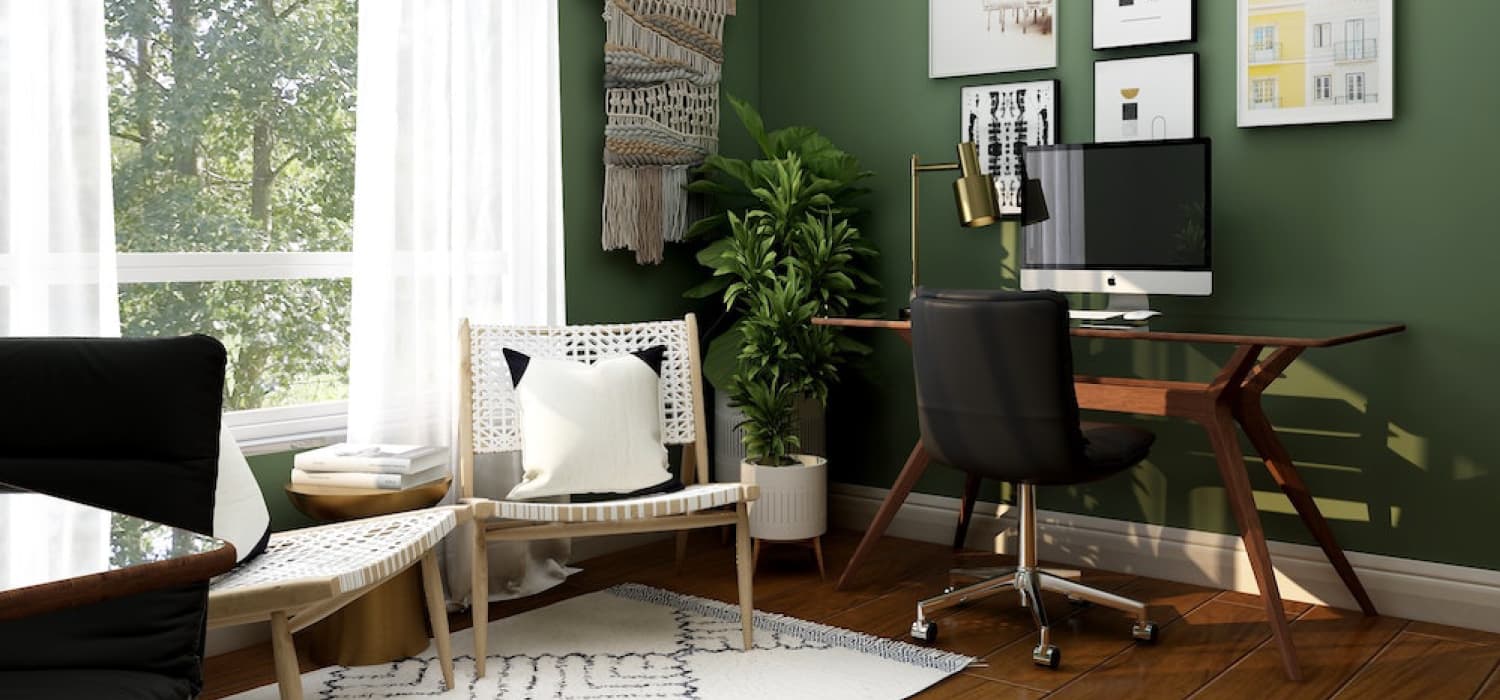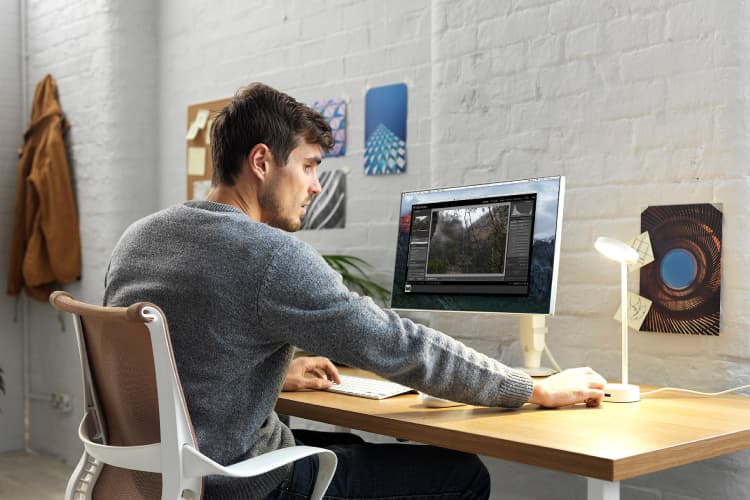Home office lighting guide

Are you wondering how to get the best lighting for your home office, or which light sources will suit your space? Lighting is an important but often neglected factor when it comes to setting up your workspace.
Find out about the options available and why choosing the best home office lighting is worthwhile in this free guide.
What are the benefits of good home office lighting?
There are a number of reasons to think carefully about lighting in your workspace, both in the office and at home. Having good lighting can increase your productivity and your health. It can also make your home office more inviting and comfortable.
Common problems of poor office lighting:
- Headaches and eye strain
- Increased risk of falls, slips and trips
- Neck, back and muscle strain
- Impact on mental health
- Lower productivity
What effect will your home office lighting have?

1. A study by the Centre for Performance at Work found that lighting is one of several factors that can help promote engagement, wellbeing and productivity at work.
2. The American Society of Interior Design found that 68% of employees complain about the lighting situation in their offices.
Lighting is just as important in your home office as the furniture and equipment you choose, but getting it right can be tricky. Unlike an office, our homes weren’t designed for all-day work, so we sometimes need to be a little inventive.
We’ve gathered up our top home office lighting ideas for a range of home workspaces to help you get the best set-up.
How to choose the best lighting for your home office

1. Choose somewhere with natural light
For many, our home office spaces are chosen out of necessity and lighting is something we think about later. If you’re lucky to have more than one option, we always recommend choosing to place your chair somewhere with natural light – like a spare bedroom. Daylight provides many benefits that artificial light can’t, and the view outside can also boost your spirits. On top of this, you could even save on your electricity bills by limiting the amount of artificial light you need.
2. Avoid glare
The best light for your home office desk or workstation is indirect light. If light is hitting your screen, it can reflect and cause glare. In conditions like these, you might need to strain your eyes to see what’s on your screen. You can also be at risk of:
- Headache
- Blurred vision
- Dry eyes
- Neck and shoulder pain
Carefully position your desk depending on where the light source is coming from. You can also use monitor arms or an adjustable laptop stand to get the perfect set-up. Then, you’ll get the benefit of natural light without its harsh, direct glare.
3. Watch out for shadows
Shadows are another common cause of eye strain. To limit the risk, avoid any inconsistent light on your screen, and your workspace as a whole. If your home office has ceiling lights, you might need to use them not just when it starts getting dark, but throughout the day too. Additional light sources like lamps can also help you get the illumination you need.
4. Supplement natural light
Scientists theorise a lack of sunlight can affect the production of hormones needed for sleep, mood stabilisation and our internal clock. It can even lead to seasonal affective disorder (SAD). If natural light isn’t an option and you notice symptoms of SAD, you can supplement your natural light with a SAD lamp like the Buerer TL20. These daylight-simulating lamps only need to be used for an hour or two for you to see the benefits.
5. Layer your lighting
Think about your home office lighting design in terms of layers. To illuminate the space properly you need to combine different types of lighting.
Types of lighting
When designing your home office lighting, try layering these three types of lighting:
Ambient lighting

This is the general lighting in your workspace. Typically it’s provided by ceiling lights, wall fixtures and windows. It’s the base layer you start with, and ideally, it’ll offer an even level of illumination. If not, installing blinds can help diffuse the light.
Task lighting

Your home office will likely be used for a variety of tasks – from working on a laptop or computer, to writing at your desk. You need task lighting to provide focused light exactly where you need it. Desk lamps are ideal for this purpose. Models like the UnoLamp Table are flexible and have different brightness options. This means you can adjust them to suit the task at hand.
Accent lighting

With accent lighting, you can highlight key architectural details and items in your home office. If you have uplifting artwork, photos or awards, this kind of lighting will help them stand out. Your accent lighting could be a floor lamp, a wall-mounted light, or picture lights. You can choose something that matches both your needs and your décor.
Choose lighting to suit your home office and your needs
Understanding how you’ll use your workspace is the first step towards deciding which lighting will suit you best. By making sure you have sufficient light throughout the entire workday, you’ll set yourself up for better health and productivity.

For further advice on creating a workspace at home, read our guide to home office set-up.
What next?
With your home office now beautifully illuminated, it's time to improve other elements of your working life. Browse our other homeworking wellbeing guides to improve your health, happiness and productivity while working from home.
Back pain working from home
Working from home wellbeing
Working from home fatigue
Working from home tips
Home office set-up
Working from home productivity
Hybrid working from home




